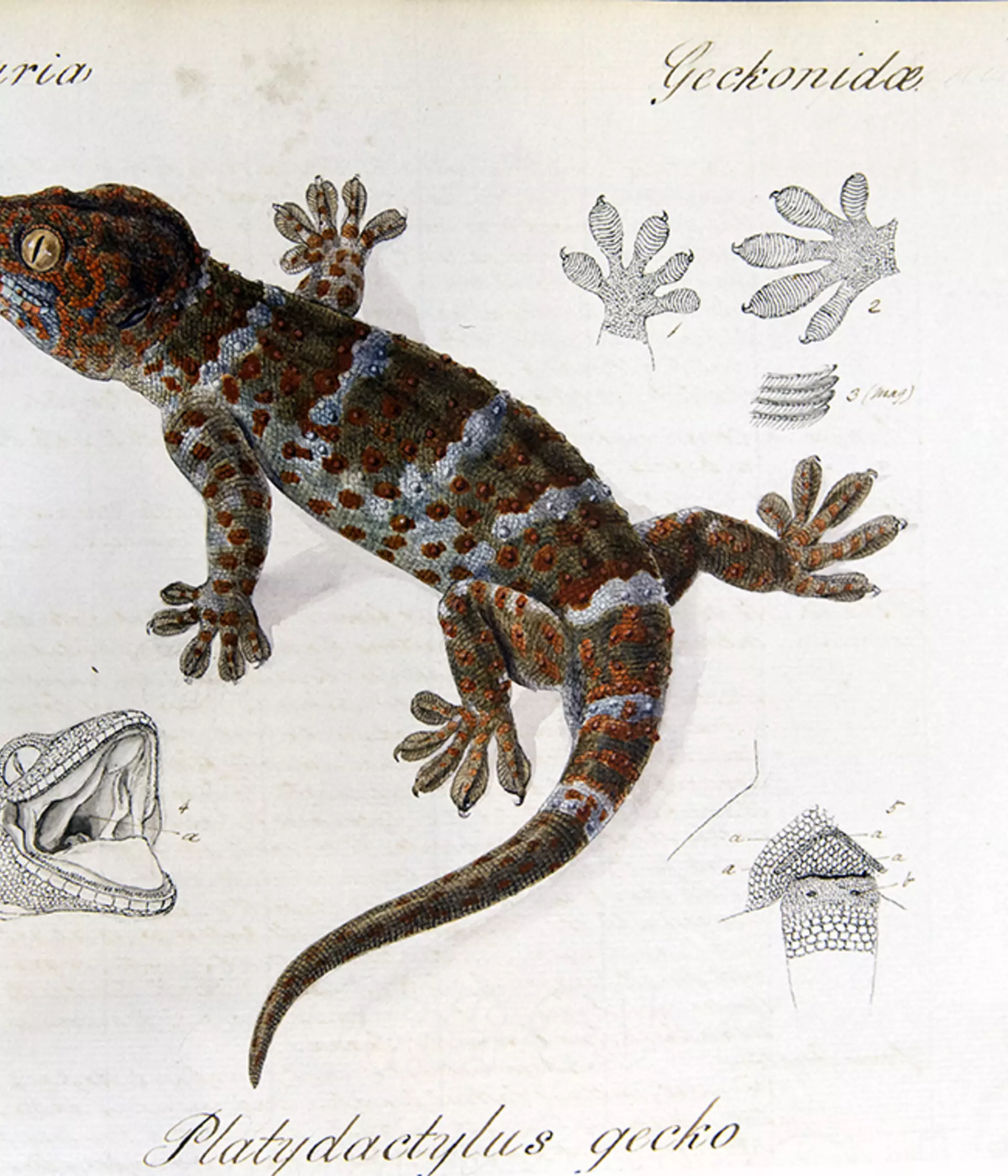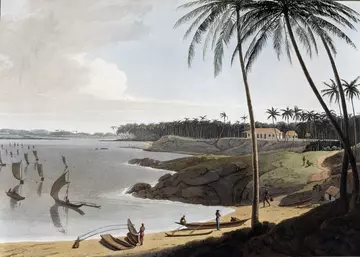
Ann Sylph, MSc, MCLIP
ZSL Librarian
Uncovering our history
ZSL's Library and Archives team is keen to uncover the lived stories of underrepresented groups and individuals who may have contributed to ZSL's history. We encourage researchers who would like to learn more, and welcome suggestions for avenues we can explore further. This blog is an initial exploration of items we have featured for South Asian Heritage Month.
In celebrating South Asian Heritage Month, we recognise that much of the work featured in this blog has been shaped by a western, colonial perspective. ZSL Library & Archives, alongside others, are actively working on ZSL's ‘hidden histories’ to uncover and recognise our colonial legacy.
Samuel Daniell, 1775-1811

The image above depicts A picturesque illustration of the scenery, animals, and native inhabitants, of the island of Ceylon... engraved after the drawings (from Nature) of Samuel Daniell, published in 1808, making this the earliest volume I want to highlight. These aquatints depict scenery, people and animals in Ceylon, now Sri Lanka. Daniell was born in Britain but lived in Sri Lanka 1806-1811. As far as we are aware, the images were made by Samuel and then printed by his brother, William. They are beautiful but very much a product of the ‘western gaze’.
Patrick Russell, 1727-1805
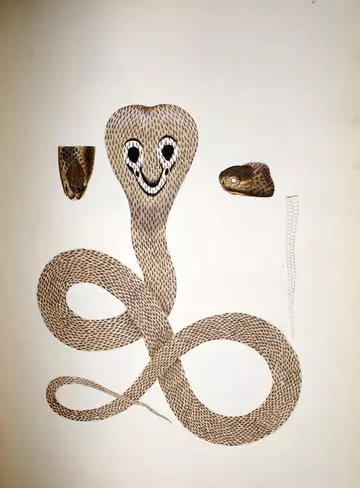
Patrick Russell was a Scottish physician who worked for the English East India Company (EIC). His magnum opus was published in 1796 by the EIC; An account of Indian serpents, collected on the coast of Coromandel followed in 1801 by A continuation of an account of Indian serpents, containing descriptions and figures, from specimens and drawings, transmitted from various parts of India. The volumes contain wonderful illustrations as well as information about the snakes, snakebite and venoms. The EIC were concerned about the large number of deaths owing to snakebite and so encouraged Russell in his work. However, Russell did not credit or acknowledge the information gained from indigenous people and the illustrations are also uncredited and unnamed. Without their contributions the books could not exist.
John Gould, 1804-81
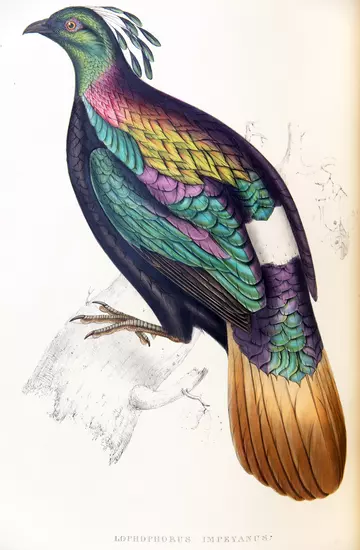
Gould was ZSL's Curator of Birds and a taxidermist. Seeing Edward Lear’s wonderful volume on the family of parrots, he went ahead and published Century of Himalayan Birds in 1833 with the text by ZSL's then Secretary, Nicholas Aylward Vigors. The fantastic illustrations are by Gould’s wife, Elizabeth Gould née Coxen, 1804-41. Gould was approached by Brian Houghton Hodgson who had supplied some of the specimens used in Gould’s book and wanted to publish his own book using his own artists from Nepal. Sadly, Hodgson's book was never published, although he did publish more than 140 zoological papers. For more about John Gould do take a look at our blog by Ann Datta our Volunteer Art Cataloguer and biographer of the Goulds.
Brian Houghton Hodgson, 1800-1894
Hodgson is widely recognised for describing the birds and mammals of Nepal, and in recognition of this his name is linked to the names of several of these animals. Realising that Nepal was virtually unknown to Europeans, Hodgson devoted the 23 years (1820-1843) he was posted there to learn as much as he could about its peoples, customs, architecture, languages, religion and natural history. He later moved to Darjeeling where he continued his studies.
Hodgson concentrated on the birds and mammals of Nepal and the Himalayas in general. In 1874 he presented ZSL with six manuscript volumes of his bird drawings and notes, and two further volumes concerning mammals. We also hold some of his correspondence. Hodgson, together with Samuel Richard Tickell, trained Nepalese artists to paint watercolours of the animals in the style of scientific zoological illustrations, building up an enormous visual reference of pictures. The illustrator for the mammal volumes was Rajman Singh, 1797-1865, born in Kathmandu to the Chitrakar family, a family of hereditary artists. As well as animals for Hodgson he illustrated many buildings, including temples.
While some paintings are finished, the manuscripts also contain sketches, notes and measurements similar to a field sketch book; yet almost always these talented artists have succeeded in producing superb images, which were then annotated by Hodgson with scientific and common names, locality and reference number.
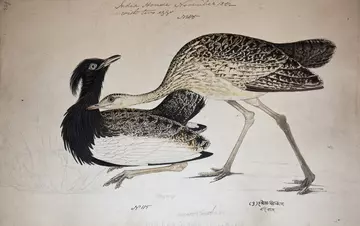
The above image from Birds Volume VI depicts the Bengal florican, Hodgson's most detailed species account. Unusually, he paid fieldworkers to observe the birds on his behalf as he was restricted to the Kathmandhu valley, and therefore could not see these birds himself in the wild.
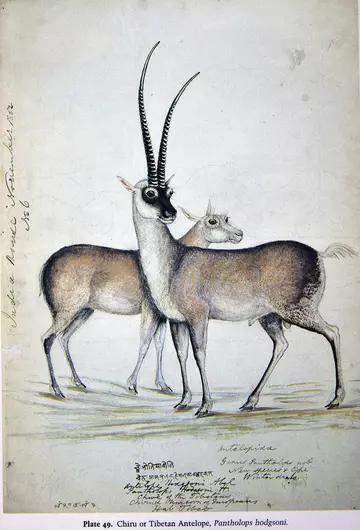
The above image is taken from Mammals Volume II depicting Chiru named for Hodgson as Panthalops hodgsonii; The Tibetan unicorn! There was a rumour of a unicorn in Nepal, however Hodgson established it was a Tibetan antelope, and the species was named for him. Find out more about Hodgson on our pages devoted to him.
Samuel Richard Tickell, 1811-1875
Tickell was related to Hodgson through marriage, and was commander of Hodgson’s military escort to Kathmandu from 1834. Tickell spent 8 months there in 1840, leaving early 1841, during which time he helped to train Hodgson’s artists in the style Hodgson required for zoological illustrations. Tickell was in Bengal in 1843 then Burma in 1847. He presented to ZSL his 14 manuscript volumes. The gecko at the top of this page is from his manuscripts.
John Shortt, 1822-89
Shortt’s Report on the lists of snakes received from the Collectorates in the Madras Presidency, [1875]. Shortt was a ZSL Fellow and qualified Physician. Born in 1822 in Vellore, the son of British man who was a retired Conductor of the Ordnance Department and an Indian woman known as Rose. From its foundation in 1835, Indians and Anglo-Indians could train at the Madras Medical College, but only occupy subordinate positions in the East India Company’s (EIC) medical service, as dressers and apothecaries – which is how Shortt began.
He saved the life of a British army officer, whose family gave him £400 (equivalent to around £40,000 today), which he used to travel to Britain in 1853. He obtained an MD from King’s College Aberdeen, later studying at Edinburgh's Veterinary College. On his return to Madras, his degree allowed him to enrol in the EIC medical service in 1854 as an Assistant Surgeon. Shortt moved up the hierarchy, working as a vaccinator, then as surgeon for the Chingleput district, to end up as Deputy-Surgeon General, the second most senior medical position in the Madras Presidency.
Shortt’s interests were wide-ranging, as shown by a very extensive bibliography of papers and books published not only in India but in Britain, unusual for an Indian author at this period. Henry Noltie, formerly of Royal Botanic Garden Edinburgh, has been researching Shortt and has so far found more than 40 papers and 9 books. My thanks to Henry for these details about Shortt.
Francis Day
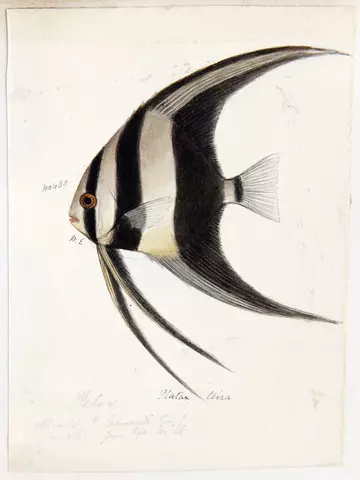
Finally I would like to highlight the amazing original drawings in Francis Day's Fishes of India, c. 1848-64. Day collected the drawings from various contributors and each is inscribed with the details of the donor including Walter Elliot, T.C. Jerdon, H.S. Thomas and Francis Buchanan-Hamilton. However in many of these, the actual artists are uncredited. For instance it is known that Buchanan-Hamilton used the illustrations of Bengali artist Haludar.
The colour drawings look as though the fish were sketched while fresh as these lose colour quickly after leaving water. They have a particular significance as in the published book The Fishes of India, 1875-1877, the illustrations are uncoloured.
Further reading
This blog has been written using material from ZSL's Library and Archives.
The prisoner of Kathmandu Charles Allen, London: Haus, 2015.
Francis Hamilton’s Gangetic fishes in colour: a new edition of the 1822 monograph, with reproductions of unpublished coloured illustrations, edited, with an introduction and commentary by Ralf Britz. London: Ray Society, 2019.
A Himalayan ornithologist: the life and work of Brian Houghton Hodgson, Mark Cocker and Carol Inskipp. Oxford: Oxford University Press, 1988.
Birds of the world: the art of Elizabeth Gould, Andrea Hart & Ann Datta. Munich/London: Prestel, 2023.
A land of their own: Samuel Richard Tickell and the formation of the autonomous Ho Country in Jharkand, 1818-1842: the historians' edition, Paul Streumer. Houten: Wakkaman, c2016.
Bhaumik, R. (2023). Picturing the Snakes: Western Natural History, Visual Culture, and Local Agency in Late-Eighteenth-Century British India. Nuncius, 38(2), 251-277. DOI: 10.1163/18253911-bja10060
My thanks also to Ann Datta, our Volunteer Art Cataloguer who helped with some background informaion.
